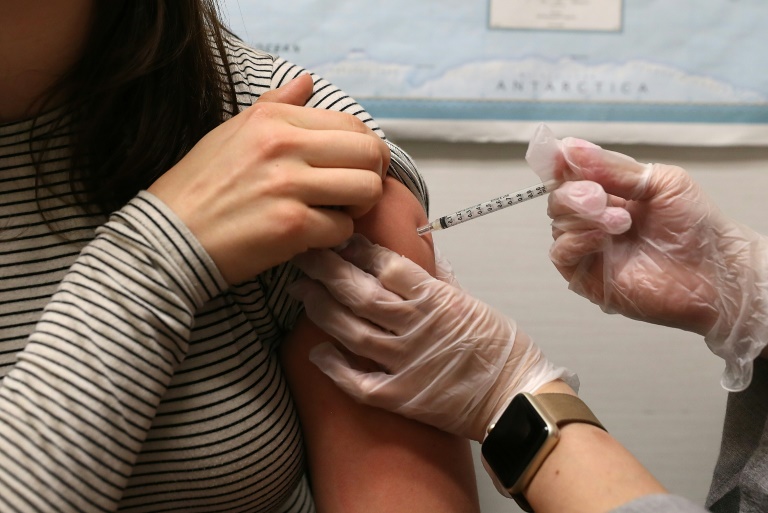Measles cases rose 300 percent worldwide through the first three months of 2019 compared to the same period last year, the World Health Organization said Monday.
“While this data is provisional and not yet complete, it indicates a clear trend. Many countries are in the midst of sizeable measles outbreaks, with all regions of the world experiencing sustained rises in cases,” the U.N. health agency said in a statement citing preliminary data.
WHO noted that actual cases always surpass reported cases, meaning the early trends for 2019 likely underestimate the severity of the outbreaks.
According to a February WHO report, measles cases in Europe more than tripled because of one country, Ukraine. In 2018, nearly 83,000 cases of measles were reported in the European region, compared with some 25,500 instances in 2017. Ukraine had more than 54,000 cases in 2018.
United Nations Children’s Fund (UNICEF) has warned that measles is highly contagious, more so than Ebola, tuberculosis or influenza.
“The virus can be contracted by someone up to two hours after an infected person has left a room. It spreads through air and infects the respiratory tract, potentially killing malnourished children or babies too young to be vaccinated,” UNICEF said.
Once infected, there is no specific treatment for measles, so vaccination is a life-saving tool for children who are usually vaccinated around their first birthday and again before starting school, but not everywhere.
Deadly Outbreak
Last year, 16 Ukrainians died of measles, and this year, eleven people have died and more than 21,000 have been infected. Among those, 17,000 children who have not been vaccinated. According to UNICEF, just 42 percent of one-year-olds had got shots as of end-2016.
“It is hard to believe that children are dying of measles in Europe in 2019,” said Simon Missiri, International Federation of Red Cross and Red Crescent Societies (IFRC) Europe Regional Director. “This disease is almost completely preventable.
UNICEF Ukraine said starting in August 2017, the Ukrainian Ministry of Health has been taking measures to stop the spread of the disease, which included efforts to ensure vaccination of children aged 1 to 9 who missed their first or second dose of MMR vaccine in addition to ongoing routine vaccination.
Later, the age span of children targeted by these measures was extended to 18, and with a special MoH order, vaccination was allowed for adults in professional risk groups, such as healthcare workers, teachers, military, police, as well as students.
UNICEF has been assisting the Ukrainian MоН in situation monitoring, data collection and analysis in relation to the measles outbreak. It has also provided technical assistance to the campaign.
“In framework of UNICEF’s support to strengthen immunisation programme in Ukraine, special focus is dedicated to the catch up campaign that started on 18 February – and lasts for a month – in the Lviv region in order to increase MMR coverage among school aged children in the region,” UNICEF Ukraine told The Globe Post.
According to MoH, as of February 1, there were up to 50,000 children not vaccinated against measles in the region. In some schools, vaccinations are being carried out by mobile brigades of doctors, and where it is more convenient, children are vaccinated in the nearest health facilities.
Reasons Behind the Spread
IFRC said poor immunization coverage has contributed to the measles outbreak in Ukraine.According to the organization, the measles vaccination rate for newborn babies was only 54 percent last year, which is amongst the lowest in the world.
Pavel Boychenko, mayor of Kiliya, a small city in Odessa Oblast of southwestern Ukraine, told The Globe Post that misinformation played an important and negative role in the measles outbreak.
“I cannot talk for the entire country, but in Kiliya – South West Ukraine – an epidemic spread also because of the parents who refused to vaccinate their child[ren],” Boychenko said.
Ukrainian legislation allows parents to choose whether to vaccinate their children or not, and authorities, as well as doctors, can only inform them about the importance of vaccination.
By the end of February, 100 measles cases have been registered in Kiliya, and five of those were serious. But after the vaccination campaign and the quarantine period finished, only vaccinated children were allowed to go back to schools and kindergartens.
“And it gave a positive result; we stopped the rise of the number of cases,” Boychenko noted.
What’s Next
According to UNICEF, over 93 percent of one-year-olds were vaccinated with first dose of MMR in 2017, compared to only 42 percent in 2016. At the same time, 90.7 percent of six-year-olds received their second dose of MMR vaccine in line with the vaccination calendar.
In 2018, 91 percent of one-year-olds were vaccinated with their first dose of MMR vaccine, and 89,5 percent of six-year-olds got the second dose of MMR vaccine in a timely manner.
“The challenge remains with achieving and sustaining coverage of MMR1 and MMR2 at the level of above 95percent, while continuing to identify and vaccinate all children aged 1 to 17 years old inclusive, who have missed either first or second doses of MMR,” UNICEF Ukraine said.


